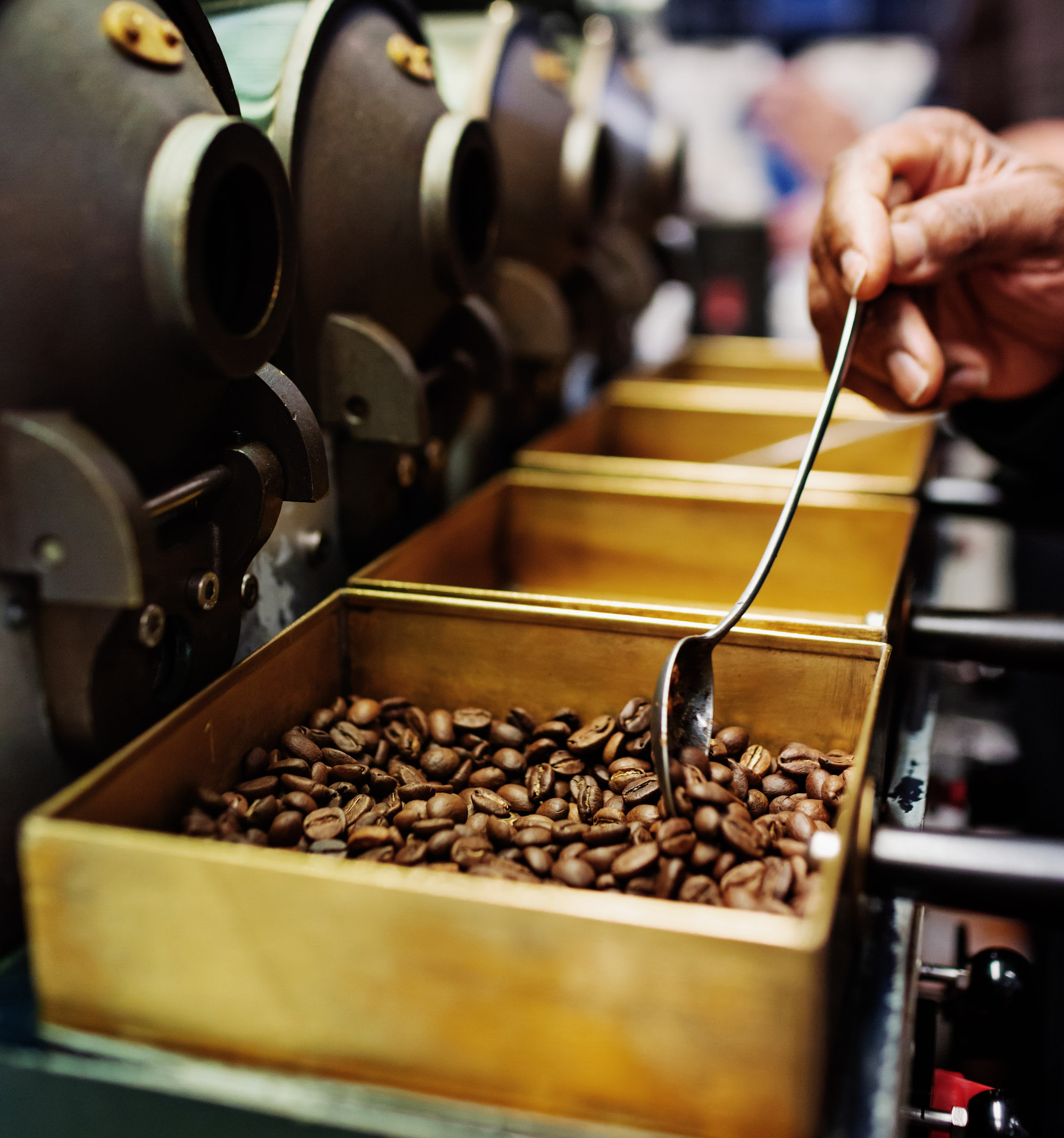When you’re cupping, it is not common practice to use a different grind setting for each different sample. This is partly for reasons of efficiency. It is also a way of comparing the solubility levels of different roasts. You could say it is more appropriate for café quality control not to dial in than it is for coffee traders. Traders are mainly concerned with ensuring coffees taste clean (free of taints) and are fresh (not more that a few months from the harvest date). Green coffee traders are less concerned with the subtleties of how a test roast is optimised. In fact, many large companies use multiple barrel sample roasters for separate samples and are not looking to optimize for the best flavours but, rather, to ensure their coffees are free from flavour taints.
 A photo of a four barrel sample roaster
A photo of a four barrel sample roaster
As Joe Marrocco from green coffee importers Cafe Imports explains in this video below, “It’s very important when you’re sample roasting … that you roast each sample to the same degree of roast. Sample roasting is not about drawing out the best character in coffee but rather about exposing the flaws.”
The efficient process you see here in this video is how a company handling hundreds of different coffee origins simultaneously manage their QC.
Café owners and baristas, on the other hand, are concerned with the finished product. We are cupping to ensure that the selection of coffees we have been delivered have been roasted properly, so we grind all our samples on the same setting. If one coffee on our list doesn’t extract properly amongst a group of coffees that do, then it is a sign of underdevelopment during roasting or possibly an indication that the sample contains a predominance of immature coffee beans. Either scenario should disqualify a cup as a good choice for your café’s menu.
We asked World Barista Champion and coffee roaster Gwilym Davies how he establishes his cupping grind setting.